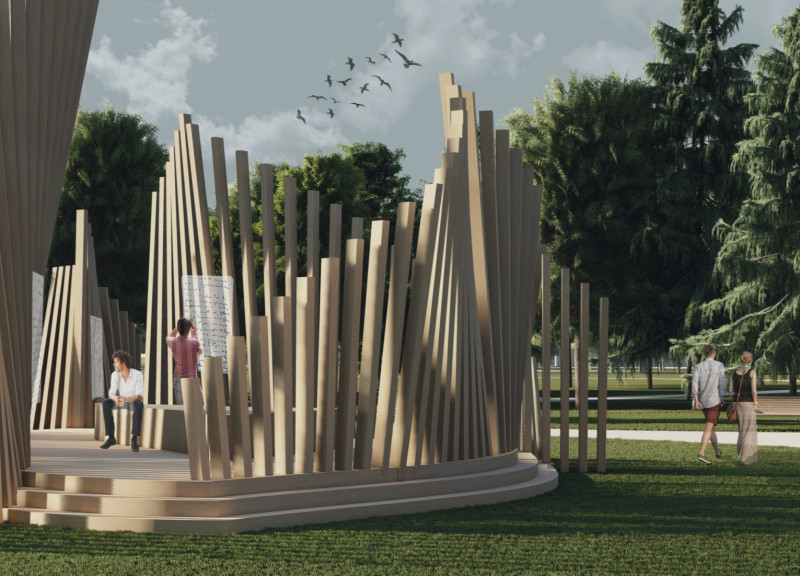5 key facts about this project
The Trimber pavilion is a contemporary structure located in the urban park of Maribor, Slovenia. It serves as a temporary gathering space designed to promote community interaction and highlight the importance of timber as a sustainable building material. The design concept draws on the natural elegance of trees, capturing their lightness and grace while integrating these characteristics into the pavilion’s form.
Design Concept
The pavilion features a distinct triangular shape, oriented in a way that connects it with the surrounding landscape. This layout encourages an engagement with the views of notable landmarks such as Pohorje, Piramida, and Kalvarija. The varying heights of the vertical elements create a wave-like effect, adding visual interest and reinforcing the connection to the environment.
Site Interaction
Strategically placed at the intersection of several pathways, the pavilion enhances pedestrian movement through the park. This location encourages both residents and visitors to use the space regularly. A central triangular bench invites people to gather and interact, fostering a sense of community and making the pavilion a hub for social activities.
Educational Exhibition
In addition to its social function, the pavilion hosts an exhibition that focuses on timber as a building material. Visitors can explore the properties of wood, learn about different tree species, and understand modern timber construction techniques. The exhibition also presents historical information, showcasing both ancient timber structures and contemporary high-rise buildings to underline the evolving use of this material.
Structural Materiality
Timber is the primary material used in the construction of the pavilion, aligning with the project’s focus on sustainability. This choice reflects a commitment to renewable resources and highlights the aesthetic qualities of wood. The design showcases the lightweight nature of timber while illustrating various structural options, emphasizing its versatility.
The pavilion allows natural light to filter through its structured elements, resulting in changing patterns of light and shadow across the ground. These effects create a dynamic environment for visitors, enhancing their experience as they engage with the space.



















































